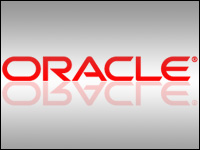
Marketing continues to heat up as the next big thing in CRM. It’s so big, in fact, that I can see it splintering in multiple ways to accommodate all the permutations that are suddenly possible, thanks to big data, analytics, and a determination to get beyond using marketing technology as a glorified accounting system designed to limit a business’ “losses” due to marketing.
You can’t win by limiting your losses.
It’s an old truism that you can’t win any game by simply playing defense and waiting for the other guy to make a mistake; you have to play the game. For a long time — now comfortably in the past — that was the attitude of the C-suite when it came to marketing.
You really couldn’t blame them. The rest of the company spoke a language of opportunities, deals and revenue, while marketers talked about booth space, impressions and collateral. These are all essential to getting deals, but they are so far removed from the revenue discussion that they could make a CFO’s eyes glaze over — and that’s a neat trick.
Modern marketing solved the problem by adopting a new vocabulary and by translating soft ideas like impressions into hard numbers involving metrics. Today, marketers can tell us how many touches it takes to make a deal, the cost per touch, and the yields of various programs — so good for them.
Horses for Courses
Marketing has become so specialized that there are now many different apps that do specific and limited things in the marketing cascade, and it takes some discipline to get around the whole enchilada.
At recent Oracle and Salesforce events, you could see a standard bifurcation between B2B and B2C marketing. Both companies have specific products for each, as well as different rationales that accept the more group-oriented thinking of a B2B purchase and the relatively more impulsive B2C variety.
Marketo, which recently held its user Summit in San Francisco, takes a B2H, or business to human, approach. I can’t say which is best, because I am a big believer in horses for courses — or the idea that some horses just like to run in the mud, while others prefer a firm course on a sunny day.
However, Marketo backs up its B2H philosophy with plenty of emphasis on the imaginative aspects of marketing. It’s messaging at Summit was all about inspiring creative people to do their best work, which I found refreshing.
That messaging comes with a bit of risk, though, since it appeals more to senior marketers with budgets, rather than to CFOs or CIOs — many of whom still control marketing’s spending.
Still, Marketo’s message is getting through, if the size of the crowd is any indication. Summit took up all of Moscone West and puts the company in the odd position of needing more space next year — but not as much as could be found around the corner in Moscone North or South. Did someone say Vegas? Yup. Next year Summit will move to the desert.
What’s Next in Marketing
Over lunch with investors, the conversation turned to the future of marketing in general and Marketo in particular. My lunchmate suggested that Marketo must next develop a full CRM suite. I disagree with that, and here’s why.
We heard the same kind of predictions when Siebel and Salesforce became successful. Many predicted they’d build ERP, despite denials by Tom Siebel and Marc Benioff respectively. Neither built ERP because neither needed to — and today I don’t think it’s wise for any current marketing company to build full CRM.
For marketing vendors, CRM has come and gone, and they’ve adapted by creating great integrations. The real opportunity, as it was for Siebel and Salesforce, is downstream. Siebel got acquired before it could execute on a downstream plan, but Salesforce is a great example of a company that could and did fully articulate a downstream vision.
CRM had significant opportunities lurking in then un-built functionality that simply needed articulation. Marketing was one such articulation, but so have been social and mobile niches, which still are being built out. It took a “blue ocean strategy” (named after an important book with that title) to fully articulate the CRM vision, but it was a better strategy than going after a crowded and already built-out market like ERP.
So, marketing today looks like the same kind of opportunity. Without the distractions of a full CRM product set, you could walk Marketo’s show floor and see an impressive array of ecosystem partners with products like analytics (6Sense and Infer are two of my picks), data solutions (Ring Lead, Dun & Bradstreet), consulting (Pedowitz Group), and sales-oriented solutions (LinkedIn, and many others) that extend Marketo’s reach and footprint without competing directly with it.
Over time, these ecosystem solutions will produce a critical mass of capability that will make marketing the new platform — just in time to give sales force automation a run for its money as the top dog in CRM. I think marketing is a favorite to overtake SFA, and it wouldn’t surprise me if at some point sales reports to marketing.
The current state of tension between the two cannot be allowed to continue forever. Too much is being lost because of poor handoffs and incompatible objectives, and we need a centralized authority over both. Efforts to create chief revenue officers move in the right direction but fail to include marketing as an equal.
The positive vibe I’ve seen in all the marketing shows contrasts with the more forced march approach in selling, which may have peaked in its ability to drive greater results on its own. Amalgamating marketing and sales seems logical, but we don’t need to start from scratch by rebuilding CRM to do it.
























































